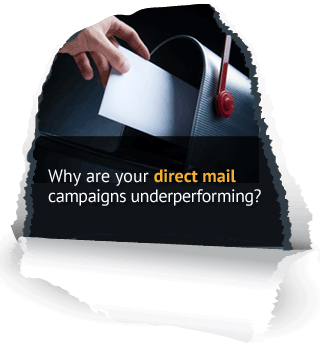
J&C Blog
Find all the latest marketing trends on the J&C Blog.

Find all the latest marketing trends on the J&C Blog.
In today’s digital world, most people assume direct mail is a dying medium. This could not be further from the truth. Direct mail is currently undergoing major changes as it is resurfacing as a valuable marketing channel.
Direct mail has become an essential component to most companies marketing strategies as more marketers realize the value of incorporating it into their marketing mix.
The key to successfully implementing direct mail is to ensure that the medium, the objective and the message are all in alignment. When this is accomplished, direct mail can be an effective tool in any marketer’s belt.
Utilizing direct mail in unison with digital marketing significantly increases the success of marketing campaigns, since a multichannel approach is more effective than a single-channel approach.
Connect direct mail to digital marketing
 One of the greatest benefits to direct mail is its physicality. Whether the item is a postcard, letter or brochure, it is a physical reminder to a customer, encouraging an action. Unlike digital content, consumers cannot simply hit “delete” and ignore the email along with the dozens or hundreds of other promotional emails in their inbox.
One of the greatest benefits to direct mail is its physicality. Whether the item is a postcard, letter or brochure, it is a physical reminder to a customer, encouraging an action. Unlike digital content, consumers cannot simply hit “delete” and ignore the email along with the dozens or hundreds of other promotional emails in their inbox.
While direct mail is physical in nature, this is not to say direct mail cannot be connected to a digital marketing strategy. Businesses can link direct mail and digital efforts by incorporating digital incentives within a direct mail campaign.
In fact, direct mail yields many different responses from consumers, most of which actually take place online. Research from Royal Mail found that after receiving a direct mail item, 92% of consumers are driven to online activity, 87% are influenced to make online purchases and 54% engage in social media.
Therefore, adding a call to action that drives the consumer online can create a synergistic relationship between direct and digital marketing strategies.
Add a personal touch
Personalization can increase the likelihood of consumers reading a piece of direct mail because it provides them with a sense of familiarity. Think about it this way: Which are you more likely to open, a letter directed to the “Current Resident” or a letter saying “[Your Name]”?
Adding a personal touch to direct mail can improve the effectiveness of a campaign. Even so, it has been found that while most marketers admit that personalization has become imperative for companies, only 6% are planning with personalization in mind. An easy way to improve direct mail is to begin by planning with the intent of offering some sort of personalization, be it the consumer’s name or a targeted product offering.
Add context
Many businesses assume that, unlike digital content like blog articles or landing pages that a consumer could stumble upon from a related Google search, direct mail has to arrive out of the blue with no previous context. This is a common misconception, as most businesses only send a one-time mailer as opposed to an ongoing direct mail campaign.
In actuality, direct mail can be used as the starting point for a multi-channel marketing campaign. By sending out a series of communications, as opposed to a one-time mailer, companies can develop an ongoing message with the consumer.
For example, the first piece of direct mail could provide the consumer with a company or product overview. Building off this piece, the secondary mailer could offer a new angle such as product benefits or a promotional offer. By creating a direct mail campaign with sequential pieces, direct mail can be used to create familiarity with the consumer instead of offering information with no surrounding context.
The importance of the offer
Including a call to action within direct mail is essential in motivating the consumer to continue to interact with the company. The key to an effective call to action is to tell the user what to do next.
Take a look at Jacobs & Clevenger’s award-winning direct mail work for Pacific Gas and Electric Company (PG&E). This campaign was developed to help encourage businesses to take an interest in energy. The creative approach for this campaign was based on showing small business owners all of the energy management resources they had available thanks to PG&E, such as tracking energy, comparing energy usage, and evaluating how they can save money and energy.
In order to motivate the consumer to use the online resources, Jacobs & Clevenger created a direct mail campaign that included a highly visual brochure featuring the actual interface of the online energy resources. This enabled users to conceptualize the resources, thereby providing them with familiarity to the resources prior to the consumer engaging online.
In addition, the attached letter had a tear-off bottom call to action that acted as a reminder for consumers to set up their online profile. This offer was effective as it enabled the consumer to take the call to action with them and complete the action within their own timeframe. In this situation, the visual brochure prepped consumers for the call to action that encouraged them to interact with the online resources.
This direct mail strategy displays the effectiveness of a well-placed call to action. The campaign resulted in 18% of recipients visiting the online energy account page and 75% of visitors creating a profile.
Direct mail is this year’s comeback kid as it has proven that it is far from being a dying medium. If you’re looking for a direct mail agency , contact Jacobs & Clevenger to ensure you are leveraging the most effective direct mail best practices.
Topics: Direct Marketing
303 E Wacker Drive, Suite 2030
Chicago, IL 60601
Phone: 312-894-3000
Fax: 312-894-3005